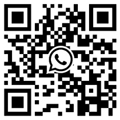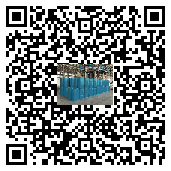UV curing hardening, wear-resistant and scratch-resistant agent: an all-round guardian from laboratory to life
In scenarios such as smartphone screen scratch repair, car headlight anti-aging, and wooden furniture surface
strengthening, a magical material called "UV curing hardening, wear-resistant and scratch-resistant agent" is quietly
changing our lives. This technology that achieves instant curing through ultraviolet irradiation not only increases
industrial production efficiency by dozens of times, but also becomes a benchmark for green manufacturing with
its environmentally friendly and energy-saving characteristics.
1. Technical principle: light-induced nano-level cross-linking revolution
The core of UV curing technology lies in the "photochemical reaction" of photoinitiators and ultraviolet rays. When
ultraviolet rays with a wavelength of 200-455nm irradiate the coating system, the photoinitiator absorbs light energy
and decomposes to produce free radicals or cations, triggering chain polymerization reactions of prepolymers such
as acrylates and epoxy resins. This reaction can be completed within 0.1-10 seconds, instantly converting the liquid
coating into a solid film layer with a three-dimensional network structure.
Taking the coating of automobile headlights as an example, the UV-curing coating with dual curing system (free
radical-cationic hybrid) can form an interpenetrating network structure on complex curved surfaces. This structure
makes the coating hardness reach 3H-6H (pencil hardness), the wear resistance is increased by 5-8 times, and it also
has excellent weather resistance and anti-yellowing properties. The water-based UV-curing system developed by
Vianova Resins in Germany has been successfully used in the coating of headlights of high-end models such as
Mercedes-Benz and BMW.
2. Industrial Application: Innovator in Four Major Fields
1). Electronic Packaging: Micron-level Precision Protection
In the manufacturing of 5G communication equipment, UV-curing adhesives are replacing traditional thermosetting
epoxy resins. Cationic UV curing systems can achieve deep curing within 10 seconds, solving the problem of uneven
curing caused by oxygen inhibition in traditional processes. The light-curing packaging materials used by Huawei,
Apple and other companies reduce the chip packaging thickness by 30%, increase the heat dissipation efficiency
by 40%, and meet RoHS environmental protection standards.
2). Automotive industry: Comprehensive upgrade from appearance to function
Lighting system: UV-cured coating can block 99.8% of ultraviolet rays, prevent oxidation of the aluminum layer
of the reflective film, and extend the service life to more than 10 years.
Interior parts: The application of water-based UV coating on steering wheels and instrument panels reduces VOC
emissions to 1/20 of traditional solvent-based coatings while maintaining excellent touch and scratch resistance.
Body coating: The UV-LED dual-band curing technology developed by BMW Laboratory can form an ultra-thin
hard coating of 0.5μm on a metal substrate with a scratch resistance of 15N (traditional coatings are only 3-5N).
3). Packaging materials: A perfect balance between safety and efficiency
In the field of food packaging, UV-cured adhesives are causing revolutionary changes. Traditional solvent-based
composite adhesives take 8 hours to evaporate the solvent, while UV adhesives can be cured within 1 minute
without solvent residue. The UV curing aseptic packaging line adopted by Mengniu, Yili and other enterprises
has increased production efficiency by 12 times, and the oxygen barrier rate of packaging materials has been
increased to 0.1cc/(m²·24h·atm).
4). Building decoration: a new benchmark for green building materials
Ultraviolet curing technology has made a qualitative leap in the performance of building coatings:
Exterior wall coatings: UV coatings modified with nano-silicon dioxide, with a wear resistance of 5000 revolutions
(GB/T 1768-1989), can resist acid rain erosion for more than 10 years.
Floor coating: PVC stone plastic floor adopts UV curing wear-resistant layer, Mohs hardness is increased to level 5,
and impact resistance reaches 200kg/cm².
Glass curtain wall: Liquid UV glue edge sealing technology shortens the production cycle of laminated safety
glass from 10 hours to 30 minutes, and the impact strength is increased by 3 times.
3. Innovation breakthrough: the future of functional coatings
Current research hotspots are developing from single performance to multifunctional integration:
Self-repairing coating:
The microcapsule-type UV coating developed by Shin-Etsu Chemical of Japan can release repair agents at the
scratches, achieving more than 80% automatic repair of scratches.
Antibacterial coating: UV-curing coating containing silver nanoparticles has a killing rate of 99.99% for Escherichia
coli and Staphylococcus aureus, and has been applied to the walls of hospital operating rooms.
Conductive coating:
UV-curing silver paste can form a conductive line with a line width of 5μm on PET film, with a resistivity as low as
5×10⁻⁶Ω·cm, which meets the manufacturing needs of flexible display screens.
4. Environmental value: a model of green manufacturing
Compared with traditional thermal curing processes, UV curing technology has significant environmental advantages:
Reduced energy consumption: only 10%-20% of the energy of thermal curing processes
VOC emission reduction: 100% solid content, no solvent volatilization
Production efficiency: shortened from hours to seconds, equipment footprint reduced by 70%
According to statistics, the global UV curing material market is growing at an annual rate of 15%, and the market size
is expected to exceed US$12 billion in 2027. Driven by China's "dual carbon" goals, UV curing technology has become
a key support for the transformation and upgrading of the manufacturing industry.
From smartphones to new energy vehicles, from smart buildings to medical equipment, UV curing hardening,
wear-resistant and anti-scratch agents are redefining the boundaries of materials science. This light curing technology,
born in the laboratory, is writing a new chapter in green manufacturing at an annual application expansion rate of
20%-30%. With the integration and development of cutting-edge fields such as nanotechnology and smart materials,
future UV-curing coatings may have more "black technology" features, creating a safer, more durable and more
environmentally friendly living space for humans.


